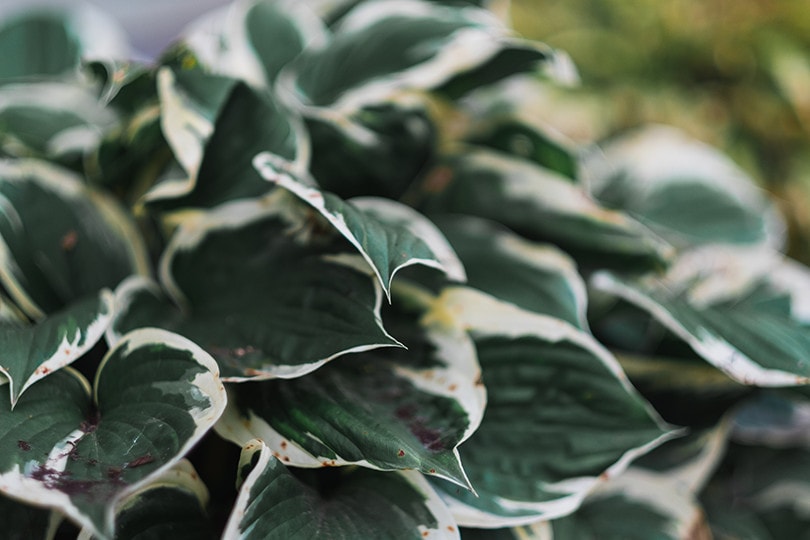Do Hostas Like Acidic Soil? Facts & FAQs
-
Pete Ortiz
- Last updated:

Hostas are very hardy and versatile perennials that are popular with many gardeners. Hostas have large green foliage and come in a variety of different shapes and sizes. Hostas are very low maintenance and require little care if they are planted in the proper environment. One of the important factors to keeping your hosta plants happy and healthy is having the correct soil composition.
Hosta plants enjoy slightly acidic soil. If you can plant your hostas in acidic soil, they will do extremely well. But what level of acidity is ideal, and how do you raise the acidity to make your hostas as happy as possible? This brief guide will help you care for your hostas’ soil, so you do not have to give it constant attention.
 Soil Acidity Level for Hostas
Soil Acidity Level for Hostas
The ideal pH level for the hostas’ soil is 6. A pH level of 6 is considered slightly acidic. The pH scale goes from 1 to 14. The lower numbers are acidic, while the higher numbers are considered base. On the pH scale, 7 is considered neutral. Hostas can grow in soil with acidity levels ranging from 6 to 7.5. They will grow the best in soil with an acidity level as close to 6 as possible, but they can grow in mildly acidic to neutral soil levels.

How to Test Your Soil’s Acidity
Reading all of those numbers might sound great, but how do you test the pH level of your soil? The easiest and most effective way to test the acidity of the soil is to buy a pH gauge. You can find affordable pH readers online. These devices are inserted into the soil and then give you an accurate reading of your soil’s pH level.
There are some home methods that you can try to get a read on your soil’s general pH level, but they’ll not be very accurate. Home methods without a gauge can tell you if your soil is acidic, neutral, or base. You can find these methods online, but your mileage may vary.
You can also bring a soil sample to your local extension office. Extensions are agricultural centers that help local gardeners and farmers perfect their craft. These government offices can test your soil and tell you the pH level as well as nutrient levels. They can also identify potential shortfalls and parasites associated with your soil.
How to Raise Soil’s Acidity
What if you discover that your soil is too alkaline or neutral for your struggling hosta plant? You can raise the acidity of your soil with various methods. One of the easiest ways to raise the acidity of your soil is to add sulfur to the soil. You can find gardening sulfur at your local garden center. Sprinkling some sulfur around your hostas can raise the acidity of the soil and help your hostas thrive.
You can also add compost to the soil. Compost is a great and easy way to lower the pH level of your garden’s soil. Compost made from things like pine needles and oak leaves is great for adjusting the pH levels of your soil.

 Conclusion
Conclusion
Hostas do indeed enjoy acidic soil. They will grow very well in slightly acidic soil and having soil that is just south of neutral can help your hostas thrive. If you need to know the pH level of your soil, you can get a pH gauge or have the soil tested. If you need to raise the acidity of the soil, you can add compost or sulfur for fast results. With these tips, you should have no trouble creating an environment for your hostas to thrive.
Featured Image Credit: Ostranitsa Stanislav, Shutterstock
Contents

 Soil Acidity Level for Hostas
Soil Acidity Level for Hostas